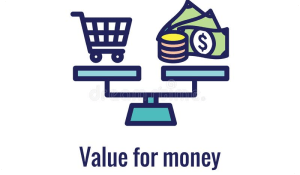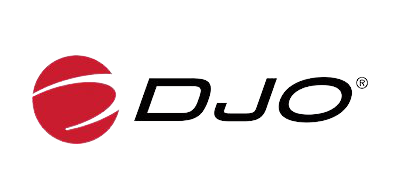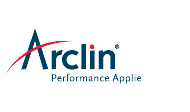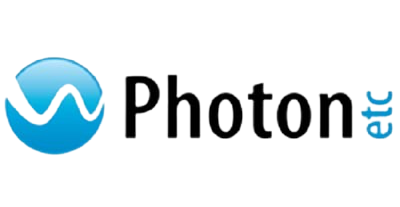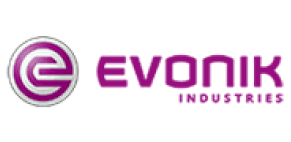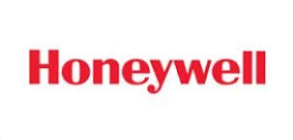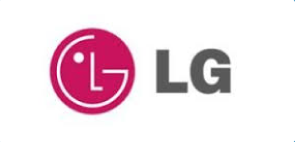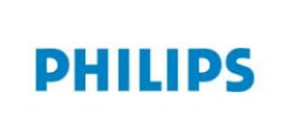Report Summary
Summary
The C2 derivatives segment is estimated to be the largest type segment of the chemical licensing market in 2017. Manufacturing C2 derivatives includes the use of technologies and processes such as polymerization, chlorination, and oxidation. A range of C2 derivatives are produced using technologies licensed major companies. Polyethylene and EDC-PVC manufacturing technologies are in high demand in the market due to their multiple applications; this demand is a major factor driving growth in the C2 derivatives segment of the chemical licensing market.
In 2020, the global Chemical Licensing market size was 10700 million US$ and it is expected to reach 16000 million US$ by the end of 2027, with a CAGR of 5.2% between 2021 and 2027.
This report studies the Chemical Licensing market size by players, regions, product types and end industries, history data 2017-2020 and forecast data 2021-2027; This report also studies the global market competition landscape, market drivers and trends, opportunities and challenges, risks and entry barriers, sales channels, distributors and Porter's Five Forces Analysis.
This report focuses on the global top players, covered
Johnson Matthey
Mitsubishi Chemical
Sumitomo
ExxonMobil
Shell
Chevron Phillips Chemical
Eastman Chemical
...
Market segment by Regions/Countries, this report covers
North America
Europe
China
Rest of Asia Pacific
Central & South America
Middle East & Africa
Market segment by Type, the product can be split into
C1 derivatives
C2 derivatives
C3 derivatives
C4 derivatives
Market segment by Application, the market can be split into
Oil & Gas
Chemical
The study objectives of this report are:
To study and forecast the market size of Chemical Licensing in global market.
To analyze the global key players, SWOT analysis, value and global market share for top players.
To define, describe and forecast the market by type, end use and region.
To analyze and compare the market status and forecast among global major regions.
To analyze the global key regions market potential and advantage, opportunity and challenge, restraints and risks.
To identify significant trends and factors driving or inhibiting the market growth.
To analyze the opportunities in the market for stakeholders by identifying the high growth segments.
To strategically analyze each submarket with respect to individual growth trend and their contribution to the market
To analyze competitive developments such as expansions, agreements, new product launches, and acquisitions in the market.
To strategically profile the key players and comprehensively analyze their growth strategies.
In this study, the years considered to estimate the market size of Chemical Licensing are as follows:
History Year: 2017-2020
Base Year: 2020
Estimated Year: 2020
Forecast Year 2021 to 2027
For the data information by region, company, type and application, 2020 is considered as the base year. Whenever data information was unavailable for the base year, the prior year has been considered.
Key Stakeholders
Raw material suppliers
Distributors/traders/wholesalers/suppliers
Regulatory bodies, including government agencies and NGO
Commercial research & development (R&D) institutions
Importers and exporters
Government organizations, research organizations, and consulting firms
Trade associations and industry bodies
End-use industries
Available Customizations
With the given market data, EternityInsights offers customizations according to the company's specific needs. The following customization options are available for the report:
Further breakdown of Chemical Licensing market on basis of the key contributing countries.
Detailed analysis and profiling of additional market players.
Table Of Contents
Table of Contents
Chemical Licensing Market Report by Company, Regions, Types and Applications, Global Status and Forecast to 2025
1 Industry Overview of Chemical Licensing
1.1 Chemical Licensing Market Overview
1.1.1 Chemical Licensing Product Scope
1.1.2 Market Status and Outlook
1.2 Global Chemical Licensing Market Size and Analysis by Regions
1.2.1 North America
1.2.2 Europe
1.2.3 China
1.2.4 Rest of Asia Pacific
1.2.5 Central & South America
1.2.6 Middle East & Africa
1.3 Chemical Licensing Market by Type
1.3.1 C1 derivatives
1.3.2 C2 derivatives
1.3.3 C3 derivatives
1.3.4 C4 derivatives
1.4 Chemical Licensing Market by End Users/Application
1.4.1 Oil & Gas
1.4.2 Chemical
2 Global Chemical Licensing Competition Analysis by Players
2.1 Chemical Licensing Market Size (Value) by Players (2019 and 2020)
2.2 Competitive Status and Trend
2.2.1 Market Concentration Rate
2.2.2 Product/Service Differences
2.2.3 New Entrants
2.2.4 The Technology Trends in Future
3 Company (Top Players) Profiles
3.1 Johnson Matthey
3.1.1 Company Profile
3.1.2 Main Business/Business Overview
3.1.3 Products, Services and Solutions
3.1.4 Chemical Licensing Revenue (Value) (2017-2020)
3.1.5 Recent Developments
3.2 Mitsubishi Chemical
3.2.1 Company Profile
3.2.2 Main Business/Business Overview
3.2.3 Products, Services and Solutions
3.2.4 Chemical Licensing Revenue (Value) (2017-2020)
3.2.5 Recent Developments
3.3 Sumitomo
3.3.1 Company Profile
3.3.2 Main Business/Business Overview
3.3.3 Products, Services and Solutions
3.3.4 Chemical Licensing Revenue (Value) (2017-2020)
3.3.5 Recent Developments
3.4 ExxonMobil
3.4.1 Company Profile
3.4.2 Main Business/Business Overview
3.4.3 Products, Services and Solutions
3.4.4 Chemical Licensing Revenue (Value) (2017-2020)
3.4.5 Recent Developments
3.5 Shell
3.5.1 Company Profile
3.5.2 Main Business/Business Overview
3.5.3 Products, Services and Solutions
3.5.4 Chemical Licensing Revenue (Value) (2017-2020)
3.5.5 Recent Developments
3.6 Chevron Phillips Chemical
3.6.1 Company Profile
3.6.2 Main Business/Business Overview
3.6.3 Products, Services and Solutions
3.6.4 Chemical Licensing Revenue (Value) (2017-2020)
3.6.5 Recent Developments
3.7 Eastman Chemical
3.7.1 Company Profile
3.7.2 Main Business/Business Overview
3.7.3 Products, Services and Solutions
3.7.4 Chemical Licensing Revenue (Value) (2017-2020)
3.7.5 Recent Developments
4 Global Chemical Licensing Market Size by Type and Application (2017-2020)
4.1 Global Chemical Licensing Market Size by Type (2017-2020)
4.2 Global Chemical Licensing Market Size by Application (2017-2020)
4.3 Potential Application of Chemical Licensing in Future
4.4 Top Consumer/End Users of Chemical Licensing
5 North America Chemical Licensing Development Status and Outlook
5.1 North America Chemical Licensing Market Size (2017-2020)
5.2 North America Chemical Licensing Market Size and Market Share by Players (2019 and 2020)
6 Europe Chemical Licensing Development Status and Outlook
6.1 Europe Chemical Licensing Market Size (2017-2020)
6.2 Europe Chemical Licensing Market Size and Market Share by Players (2019 and 2020)
7 China Chemical Licensing Development Status and Outlook
7.1 China Chemical Licensing Market Size (2017-2020)
7.2 China Chemical Licensing Market Size and Market Share by Players (2019 and 2020)
8 Rest of Asia Pacific Chemical Licensing Development Status and Outlook
8.1 Rest of Asia Pacific Chemical Licensing Market Size (2017-2020)
8.2 Rest of Asia Pacific Chemical Licensing Market Size and Market Share by Players (2019 and 2020)
9 Central & South America Chemical Licensing Development Status and Outlook
9.1 Central & South America Chemical Licensing Market Size (2017-2020)
9.2 Central & South America Chemical Licensing Market Size and Market Share by Players (2019 and 2020)
10 Middle East & Africa Chemical Licensing Development Status and Outlook
10.1 Middle East & Africa Chemical Licensing Market Size (2017-2020)
10.2 Middle East & Africa Chemical Licensing Market Size and Market Share by Players (2019 and 2020)
11 Market Forecast by Regions, Type and Application (2021-2027)
11.1 Global Chemical Licensing Market Size (Value) by Regions (2021-2027)
11.1.1 North America Chemical Licensing Revenue and Growth Rate (2021-2027)
11.1.2 Europe Chemical Licensing Revenue and Growth Rate (2021-2027)
11.1.3 China Chemical Licensing Revenue and Growth Rate (2021-2027)
11.1.4 Rest of Asia Pacific Chemical Licensing Revenue and Growth Rate (2021-2027)
11.1.5 Central & South America Chemical Licensing Revenue and Growth Rate (2021-2027)
11.1.6 Middle East & Africa Chemical Licensing Revenue and Growth Rate (2021-2027)
11.2 Global Chemical Licensing Market Size (Value) by Type (2021-2027)
11.3 Global Chemical Licensing Market Size by Application (2021-2027)
12 Chemical Licensing Market Dynamics
12.1 Chemical Licensing Market Opportunities
12.2 Chemical Licensing Challenge and Risk
12.2.1 Competition from Opponents
12.2.2 Downside Risks of Economy
12.3 Chemical Licensing Market Constraints and Threat
12.3.1 Threat from Substitute
12.3.2 Government Policy
12.3.3 Technology Risks
12.4 Chemical Licensing Market Driving Force
12.4.1 Growing Demand from Emerging Markets
12.4.2 Potential Application
13 Market Effect Factors Analysis
13.1 Technology Progress/Risk
13.1.1 Substitutes
13.1.2 Technology Progress in Related Industry
13.2 Consumer Needs Trend/Customer Preference
13.3 External Environmental Change
13.3.1 Economic Fluctuations
13.3.2 Other Risk Factors
14 Research Finding/Conclusion
15 Appendix
Methodology
Analyst Introduction
Data Source




